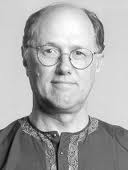September 21st: The International Day of Peace
by George Wolfe
In 1999, the United Nations General Assembly established September 21st as an international day of ceasefire around the world to provide opportunity for humanitarian aid to reach civilians caught in the crossfire of war. Originally entitled “Peace One Day,” it has become known as the International Day of Peace, symbolizing the hope that someday one international day of ceasefire will lead to many more.
Periods of ceasefire are desperately needed to help nations and NGOs deal with the massive number of displaced families in the Middle East and Africa that total well over 60 million individuals. These civilian war victims consist mostly of women and children that have fled from war-torn countries since the United States launched its war in Afghanistan in 2001 and its pre-emptive invasion of Iraq in 2003. Given the rise of ISIS, it should be clear to us now that things have gotten worse, not better.
This year, citizens of Muncie can join the Muncie Interfaith Fellowship from 5 to 6 PM to commemorate this multinational ceasefire day by walking the labyrinth at the Lutheran Church of the Cross, 4401 N. Wheeling Avenue.
My interest in walking a labyrinth as a meditative practice was revived last July when I had the opportunity to teach and perform at the New Harmony Music Festival and School that is held in New Harmony, Indiana. Christopher Layer, a graduate of the Ball State University School of Music who now resides in New York City, organizes this annual festival.
The town of Harmony was established by the Harmony Society in 1814. In 1825 an industrialist named Robert Owen purchased the town after the original settlers, known as “Harmonists,” decided to move back to Pennsylvania. Owen renamed the town “New Harmony,” hoping to create a utopian community.
Like the later experiment in Massachusetts in the 1840’s known as Brook Farm, New Harmony as a utopian experiment was an economic failure. Perhaps that is why the word “utopia,” which is of Greek origin, literally means “no place.”
Historical figures, such as philosopher and theologian Paul Tillich and Christian contemplative and Trappist Monk Thomas Merton, have also contributed to the unique history of New Harmony. In addition to its 19th Century historic architecture, the town’s landscape features the unique “Roofless Church” and a large granite labyrinth.
A Labyrinth at first looks like a maze, but it is different than a maze in that it has a single path that winds around geometrically, leading ultimately to a center. Walking slowly through a labyrinth is a form of meditation. The systematized meandering path is a metaphor for the life journey. The path always begins by moving directly toward the center of the labyrinth. But before one reaches the center, the path is redirected many times over.
As the path continues, you eventually you do arrive at the center space, but are left wondering how it all worked out. I like to think of it as a mini-pilgrimage and a practice that facilitates mindfulness and prayerful reflection.
Labyrinths actually date back to ancient Greece. Yet they are often associated with Christianity, probably because the most famous labyrinth is in Chartres Cathedral in France. However, walking a labyrinth is not inherently a Christian exercise. People from any faith or philosophical tradition can benefit from the practice. There is certainly no reason one’s personal pilgrimage cannot be inspired by humanism as well as by a religious tradition.
What a labyrinth walk does is place us in a reflective state of awareness where we become receptive to hearing the “voice of wisdom” that is within. The end result is greater insight and a sense of inner harmony which is the real goal of the journey.
Muncie is fortunate to have its own outdoor labyrinth at the Lutheran Church of the Cross. Please join the Muncie Interfaith Fellowship there on September 21st from 5 to 6 PM. If you stop by, you may see me on its stone path, continuing my personal inward journey that has no end.
George Wolfe is Professor Emeritus and former director of the Ball State University Center for Peace and Conflict Studies. He also chairs the Muncie Interfaith Fellowship, is a trained mediator, and the author of The Spiritual Power of Nonviolence: Interfaith Understanding for a Future Without War.



